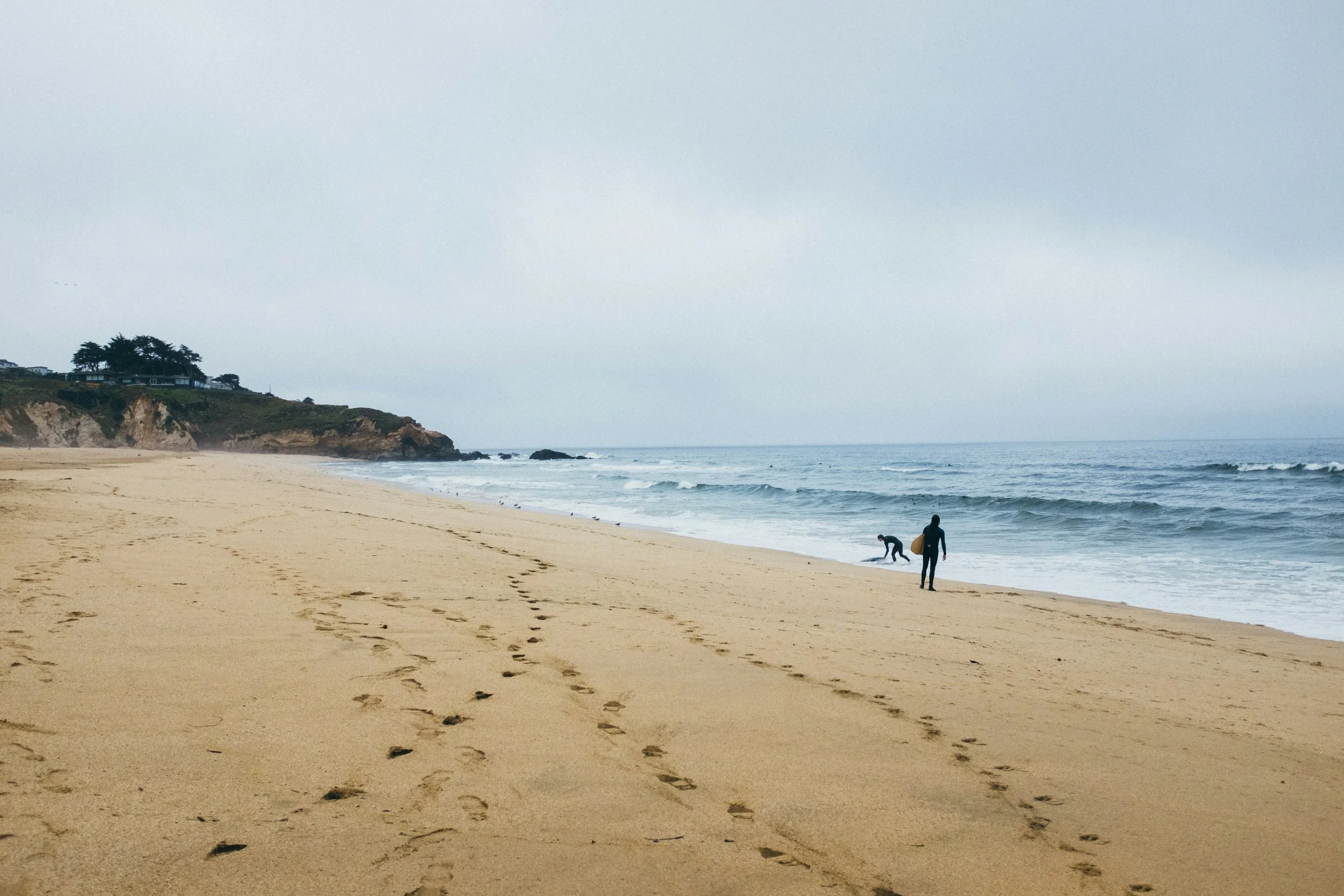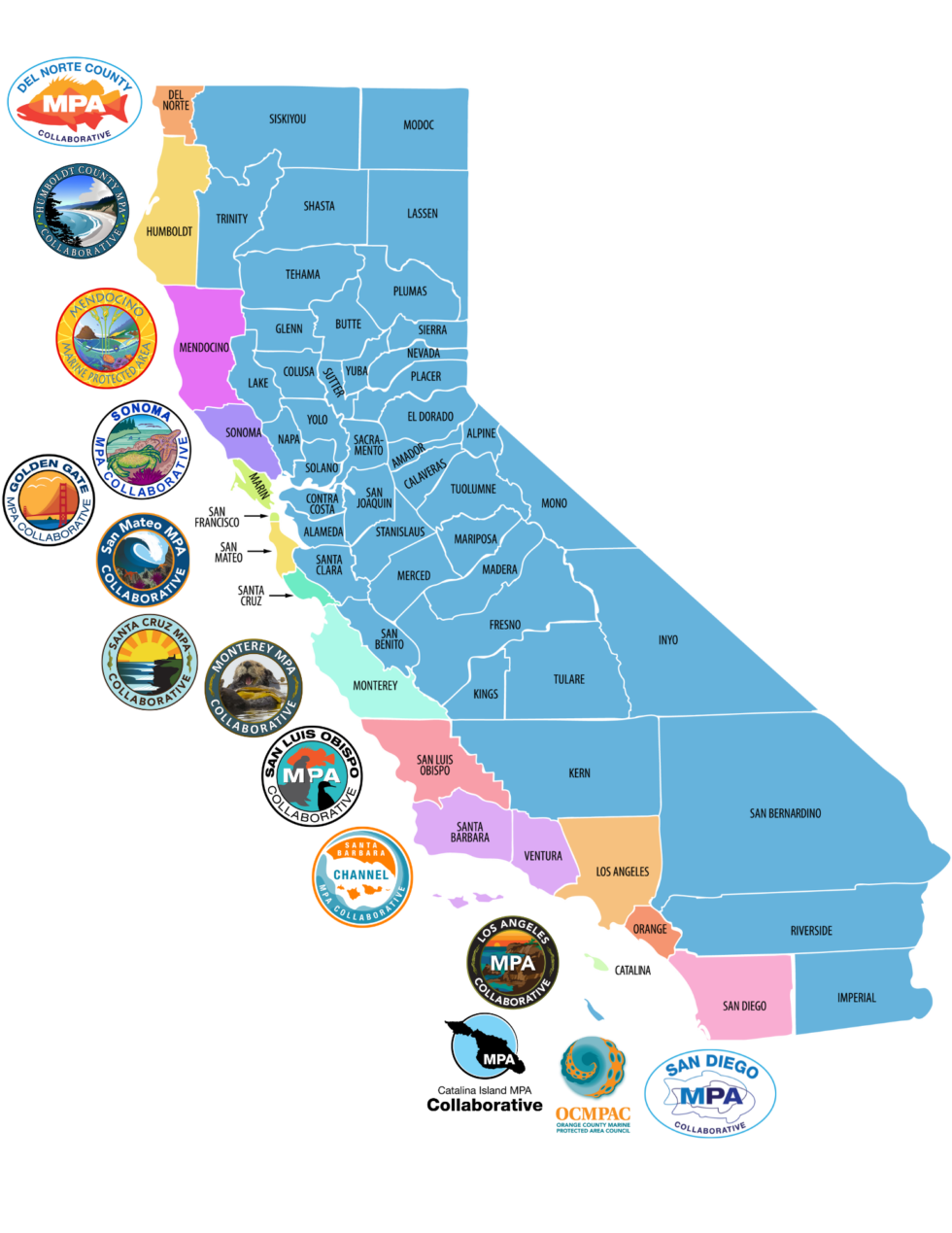
Vulnerability Assessment for San Mateo’s Marine Protected Areas
Evaluating Climate-Driven Impacts and Developing Innovative Adaptation Strategies for Harbor Seals, Sea Stars, and Tidepools
Project Brief
California’s marine protected areas are socially and ecologically important areas for building long-term ocean and coastal resilience, particularly in the face of climate change. To better understand how these areas might be impacted by human and environmental changes, the Marine Protected Area Collaborative Network partnered with Sea & Shore Solutions to conduct a pilot Rapid Vulnerability Assessment for two marine protected areas in San Mateo County: Montara State Marine Reserve and Pillar Point State Marine Conservation Area.
Objectives
Host two vulnerability assessment workshops with San Mateo Collaborative members
Identify top assets of interest (species, habitats, etc.)
Assess top climate and non-climate stressors facing those assets
Characterize social and ecological factors contributing to the assets’s ability to adapt
Build management strategies that can reduce asset’s vulnerability to stressors
Context
California is home to a remarkable 840 miles of treasured coastline and a world-class system of 124 MPAs. In 2024, the Marine Protected Area Collaborative Network conducted regional forums gathering insights on environmental change concerns and potential solutions related to climate change. A consistent recommendation across these reports, from over 600 forum and survey participants, is the necessity of conducting vulnerability assessments for California’s marine protected areas.
Collaboration
The Marine Protected Area Collaborative Network was a foundational partner in this work, providing funding and a direct connection to community members, experts, and managers related to San Mateo’s MPAs.
Through the Network, we led the San Mateo Collaborative through two virtual workshops to gather their perspectives. These workshops included scientists, managers, and community members, each providing a unique set of knowledge and expertise. Their feedback steered this vulnerability assessment process - leading us to investigate harbor seals, sea stars, and tidepools.
Strategy
Strategy is at the heart of vulnerability assessments, as the primary objective is to develop effective and efficient strategies to reduce vulnerability. Findings from the assessment feed directly into strategy brainstorming, aiming to identify a wide range of approaches to reduce vulnerability by either reducing the risk or consequence of the stressor or by increasing adaptive capacity. This large list is then refined by assessing the cost and effectiveness of each strategy - the final two are built out in a strategy implementation plan.
Through this project, we identified 30 strategies that reduce vulnerability of harbor seals, sea stars, and tidepools in San Mateo’s two marine protected areas. A final 7 were built out in full implementation plans - described in more details below.
Science
The Rapid Vulnerability Assessment model is grounded in best available science to understand historic, current, and projected future conditions. This science infuses the entire process, with experts as key participants in the vulnerability workshops and reviewers of all completed products. Throughout this project, we created several in-depth scientific assessments:
Rapid vulnerability assessment framework
-
The vulnerability of San Mateo MPAs to climate risks was assessed by utilizing a structured RVA methodology to identify key assets of interest (e.g., habitats, species, geographic formations, infrastructure, etc.), assess climate and non-climate risks, evaluate adaptive capacity (e.g., social and ecological factors of resilience and adaptation), calculate vulnerability for each asset, and develop science-based strategies to reduce vulnerabilities. This methodology was developed specifically for MPAs in North America, and has been utilized at length across different management regimes, including the National Marine Sanctuary System (CEC, 2017).
san mateo regional climate summary
-
Prior to the RVA steps, we set the stage for the assessment by creating a regional climate summary that assessed the current and projected status of 13 climate parameters. The summary was informed by a thorough literature review and peer-reviewed by subject matter experts, providing a solid foundation for the upcoming workshops.
harbor seal, tidepool, & sea star assessments
-
Following the identification of assets and stressors, we created asset-specific assessment summaries that consider climate and non-climate stressors. These summaries were informed by a thorough literature review and expert interviews, and reviewed by subject matter experts. Summaries were provided to workshop participants prior to the workshop to provide a solid foundation.
Innovation
This project highlights several innovative approaches to natural resource evaluation and strategy development:
-
Environmental management and assessments traditionally rely on academic research and datasets, both of which are incredibly important for assessing physical and ecological functions of a region. Local knowledge of those that live or recreate in those areas is an important complement to this science, providing boots-on-the-ground perspectives and observations that may not emerge from larger-scale assessments. This vulnerability assessment method allowed us to seamlessly integrate the best of both worlds through discussions with academic experts and community members, resulting in regional and asset-specific results that include well-documented scientific findings and local observations.
-
Development of successful strategies is critical for xxx resource management, but traditional strategy creation processes may be limited in scope and creativity due to time constraints and lack of diverse involvement. Through this process, academic experts and community members were active participants in strategy creation, offering their own unique ideas. State resource managers noted the vast creativity in the brainstormed strategies, including many that had never been considered prior to this process.
-
It is important to S&S and to the vulnerability assessment team that results are shared with the San Mateo community and other marine protected area supportors across the state, but we do not expect everyone to read an 80 page report! Instead, we developed an interactive online resource that tells the story of this process through mixed media, showcasing photos, videos, infographics, maps, and limited explanatory text.
View the Story
Outcomes
This project culminated in the creation of 7 unique management strategies for reducing vulnerability to climate impacts! To share the results of this project, we developed a Comprehensive Report, StoryMap, and hosted a community Webinar. Explore these resources if you wish to learn more about the process and outcomes!
Please contact adrian@sea-shoresolutions.com to learn more about this project or related work.




